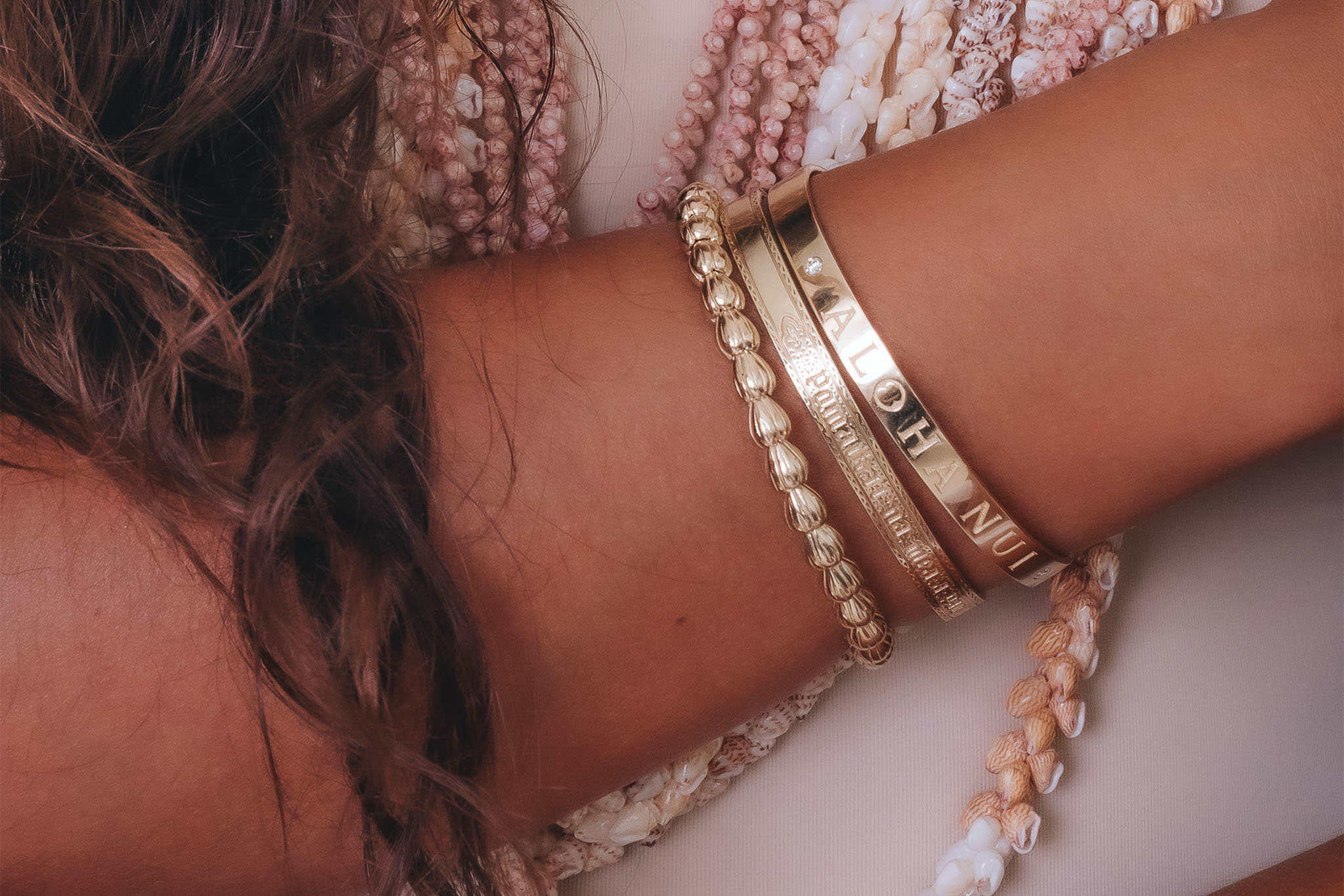Text by Viola Gaskell
Images by Jenn Ellenburg and Nani Welch Keli‘iho‘omalu
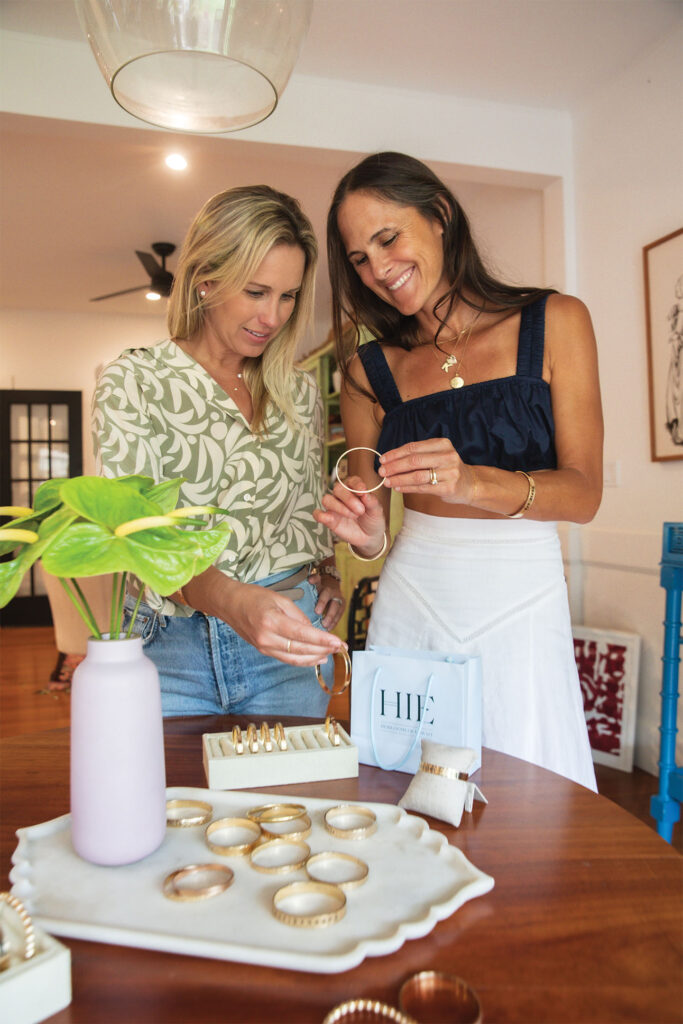
Growing up, both Noël Shaw and Meleana Estes were accustomed to the familiar clang of gold on gold sounding from their matriarchs’ wrists, which were never without gold bands engraved with Hawaiian words in Old English lettering. The flashes of metal were a constant during Estes’ lei-making sessions with her tutu (grandmother), renowned lei maker Amelia Ana Ka‘ōpua Bailey, whose bracelets would dance as she wove ti leaves around the stems of delicate flowers. More than mere adornment, the bangles were emblematic of Hawai‘i’s last reigning monarch, Queen Lili‘uokalani, who fought fiercely to preserve the Hawaiian Kingdom. A century and a half later, Shaw and Estes are reinvigorating the tradition with HIE, their collection of gently updated Hawaiian heritage jewelry.
Here in the islands, the gifting of Hawaiian gold bracelets is a beloved tradition marking milestones in the recipient’s life. Estes’ namesake band, originally a gift to her mother in honor of Estes’ birth, became hers upon turning 16. Two years later, Estes’ tutu gave her a bracelet to mark her graduation from high school, and then another, one of her tutu’s own adornments, on Estes’ 30th birthday. “Those are my heirlooms, and I haven’t taken them off since they were gifted to me when I was young,” Estes says.
When Estes and Shaw gave birth to their own children, they were unable to find heritage bracelets that fit their modern aesthetic. At the same time, the two friends noticed the tradition itself was fading, as practical household goods supplanted more sentimental gifts. “We’d seen enough baby showers and bridal showers where there was no heritage jewelry involved in any of the gifting,” Shaw says. “We wanted to change that.”
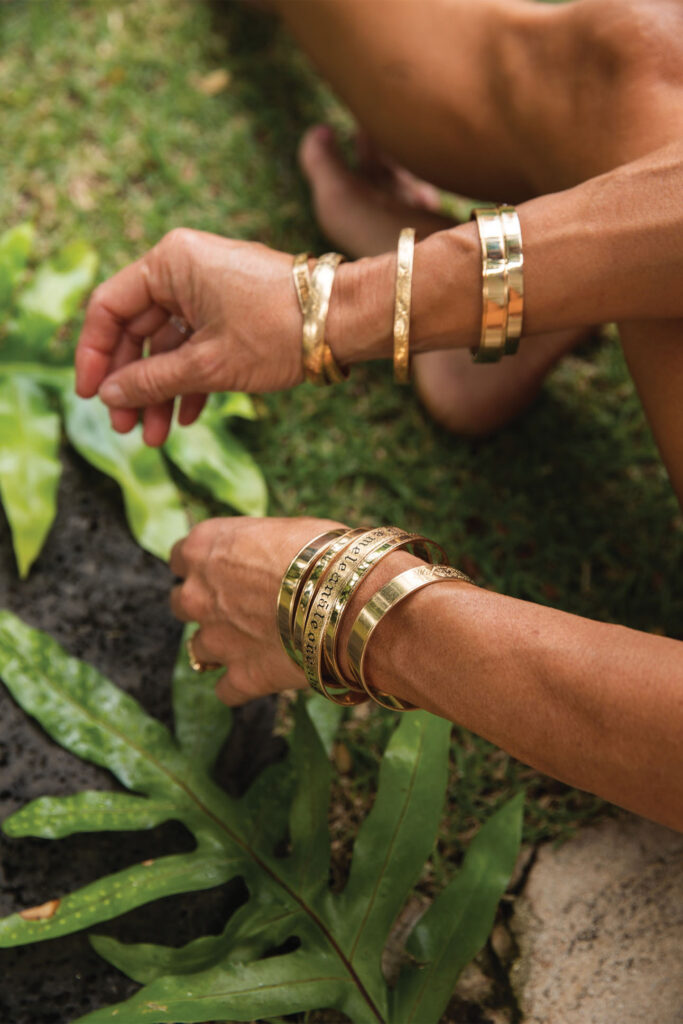
In 2019, during her search for the perfect Hawaiian bracelet, Shaw studied her family’s heritage jewelry collection and was surprised to find a bangle, dated New Year’s Day, 1881, that had belonged to her great-great-great-grandmother Lizzie Nakanealoha, a confidant of Queen Lili‘uokalani. Inspired by their family histories and frustrated with their fruitless search for tasteful solid-gold Hawaiian bracelets, Shaw, an entrepreneur, and Estes, a stylist and lei maker, decided to combine their talents and design their own. Four years later, HIE—meaning “to beautify” in Hawaiian—was born.
HIE is a modern take on a tradition popularized by the fashionable Queen Lili‘uokalani. For decades, the queen’s affinity for gold bracelets engraved with black glass enamel were thought to have begun with a gift she received from Queen Victoria at the British royal’s Golden Jubilee in London in 1887. But a photograph of the then-chiefess taken 25 years earlier, in 1862, shows the newly engaged Hawaiian royal wearing at least one engraved gold bangle, thought to be her original Ho‘omana‘o Mau (“Always Remember”) bracelet. And in 1885, when Lili‘uokalani sat for a portrait in her famous “bird dress,” multiple gold bangles are shown adorned her wrist.
Jeweler Philip Rickard, author of Hawaiian Heirloom Jewelry: A Lasting Remembrance, interprets the text and symbols on the queen’s Ho‘omana‘o Mau bracelet—which includes chevrons, a Masonic compass, the fleur-de-lys, and the kāhili (Hawaiian symbol for royalty)—to mean, “Always remember that guidance from above protects me and those I protect by my good judgment and love of perfection, light, and life, for I am royalty.”
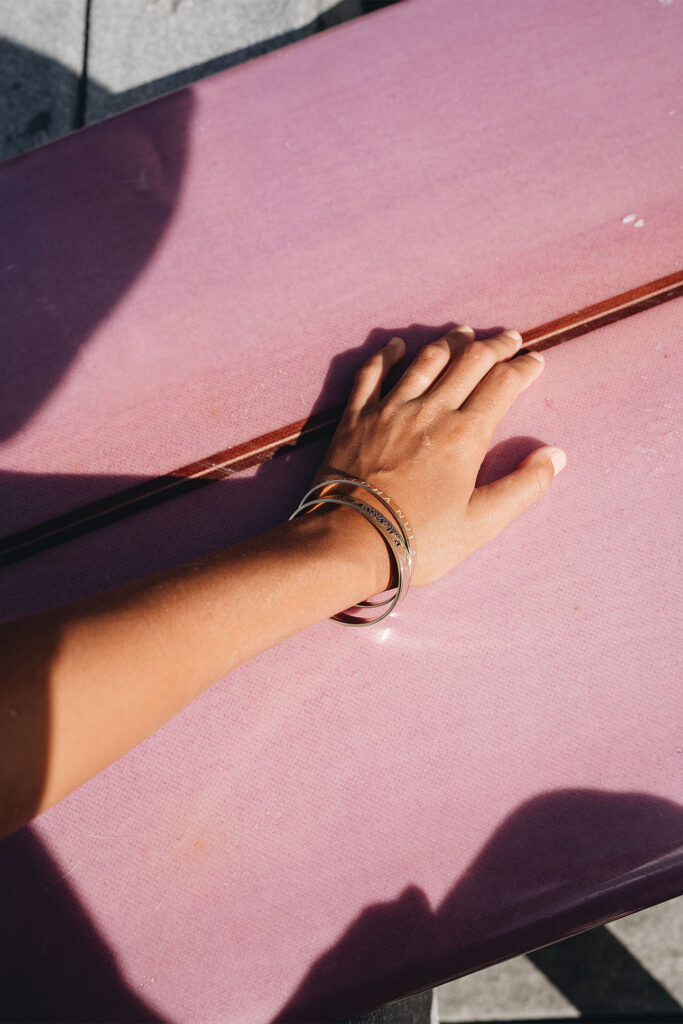
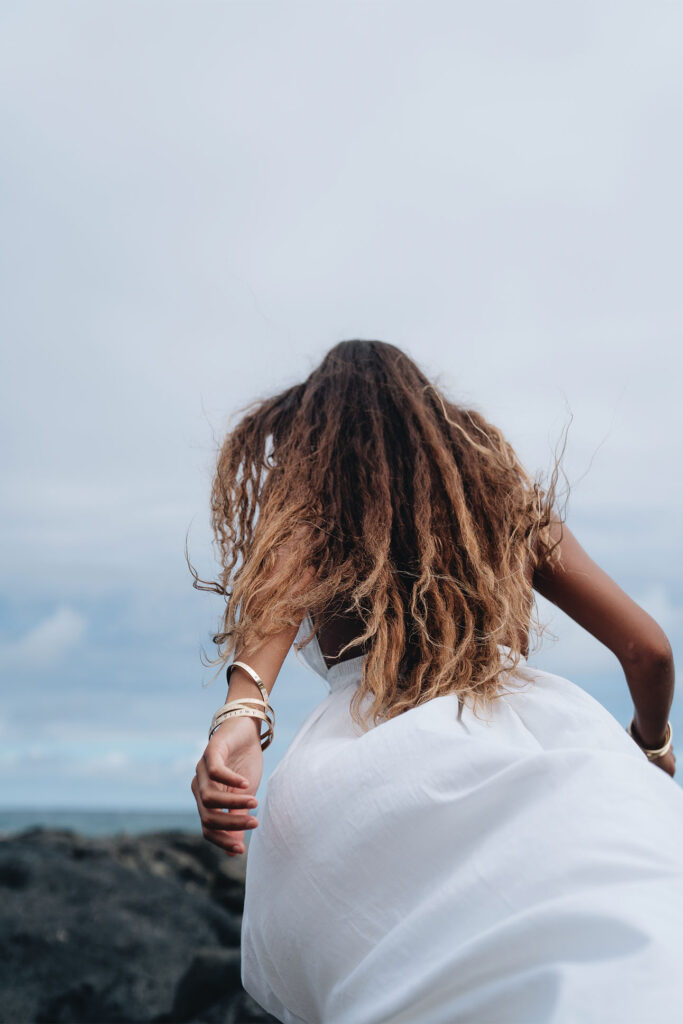
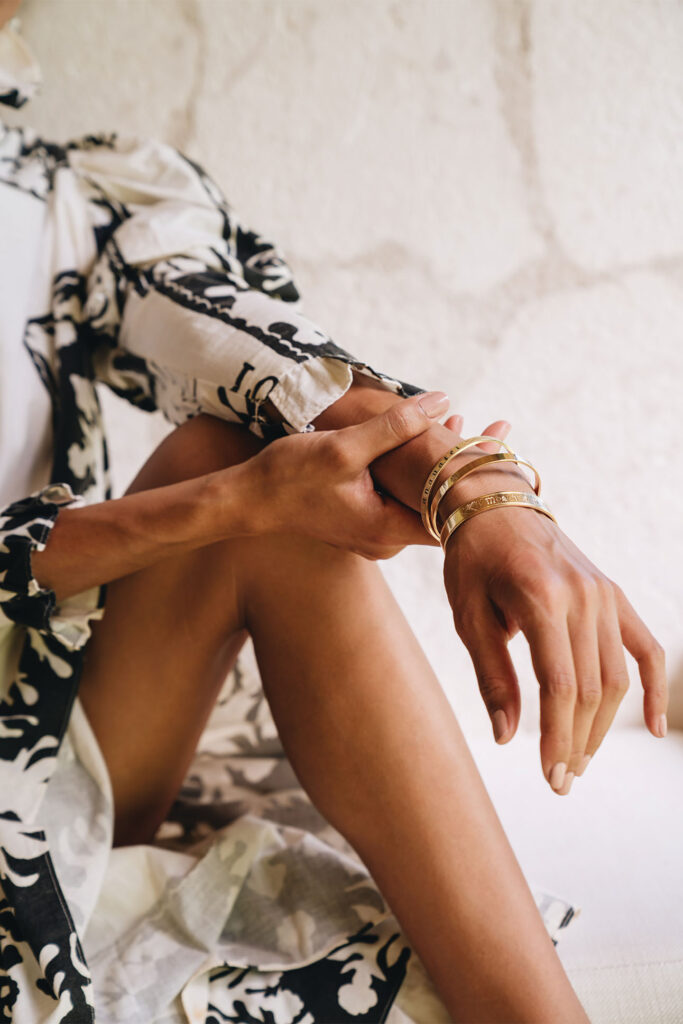
This integration of Old English heraldry and Hawaiian words and symbols is indicative of both the reach of Victorian fashion and Hawai‘i’s ties to the British monarchy at the time. After Queen Victoria’s husband, Prince Albert, died in 1861, the British queen donned black mourning attire, including a gold bracelet engraved with black glass enamel. Mourning attire and black enamel jewelry became fashionable throughout the Western world, and Lili‘uokalani followed suit.
“A lot of the royals at that time—just look at King Kalākaua—wanted to appear European,” Shaw explains. Traces of that desire are still visible today in what remains of the Hawaiian monarchy: the Old World grandeur of ‘Iolani Palace, the British Empire’s Union Jack on the Hawaiian flag. As the U.S. moved toward annexing Hawai‘i, pro-British sentiment only grew, as did Lili‘uokalani’s relationship with the British monarchy.
Shaw and Estes believe Hawaiian heritage jewelry is, in some ways, inexorably tied to the poignant travails of the islands’ last sovereign queen. One bracelet in the HIE collection is engraved with the words “Ke Aloha O Ka Haku,” or “The Queen’s Prayer,” a hymn Lili‘uokalani wrote while imprisoned at ‘Iolani Palace. In designing the piece, the pair hoped to honor both Lili‘uokalani’s grace and her determination to protect her people and culture.
More than just fashion accessories, the bracelets have provided opportunities to educate others about Hawai‘i’s not-so-distant history. Recently, Shaw and Estes met with a group from New York who weren’t even aware that Hawai‘i was once a monarchy. Estes explained to them, “Actually, we had a queen, and she was overthrown, and she was the epitome of a matriarch for our culture at that time and has remained that way today.”
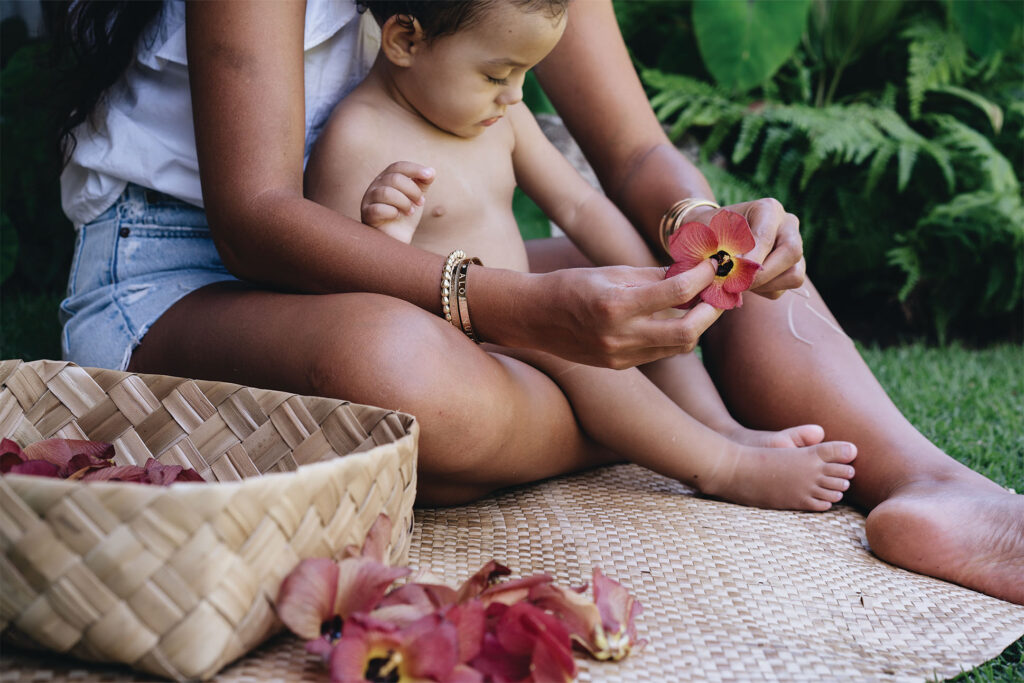
Now that Shaw and Estes have a growing number of HIE solid-gold bangles to add to their personal collections, Estes says, “I’m getting noisier and noisier and happier and happier with all my jingle-jangle.”




